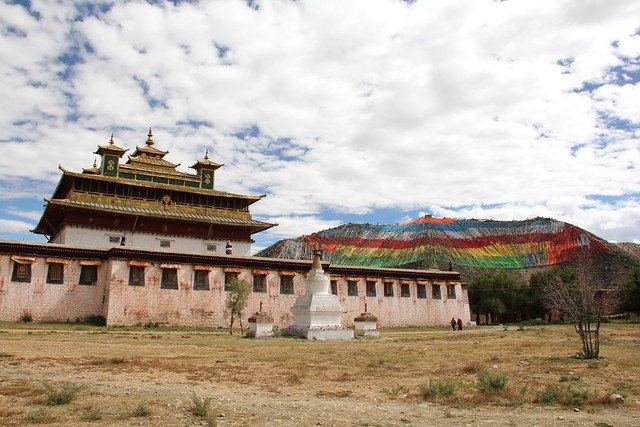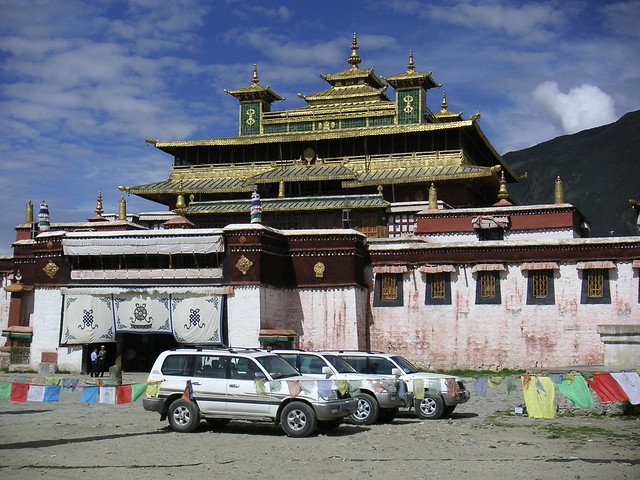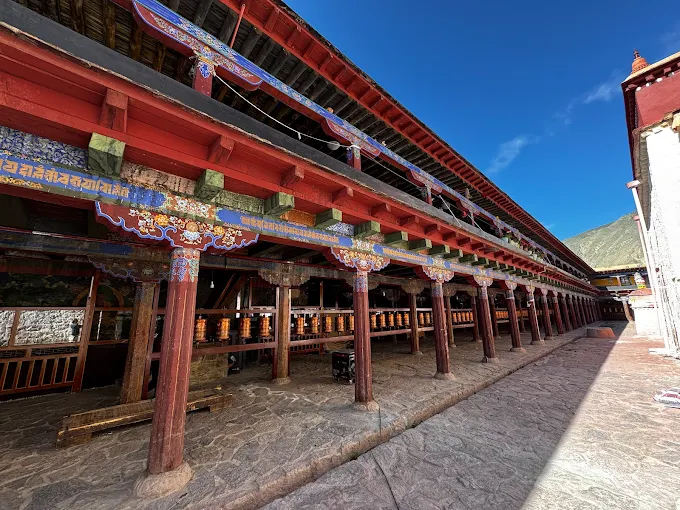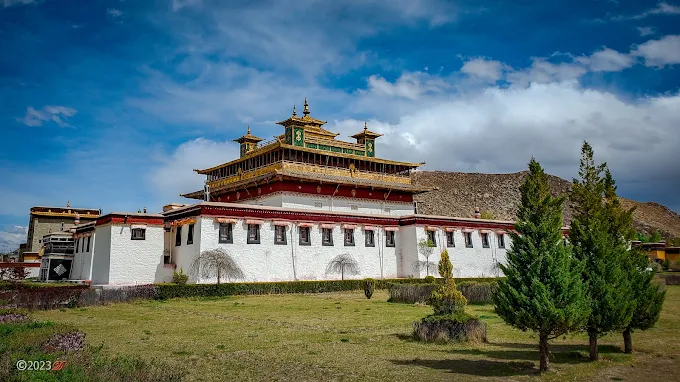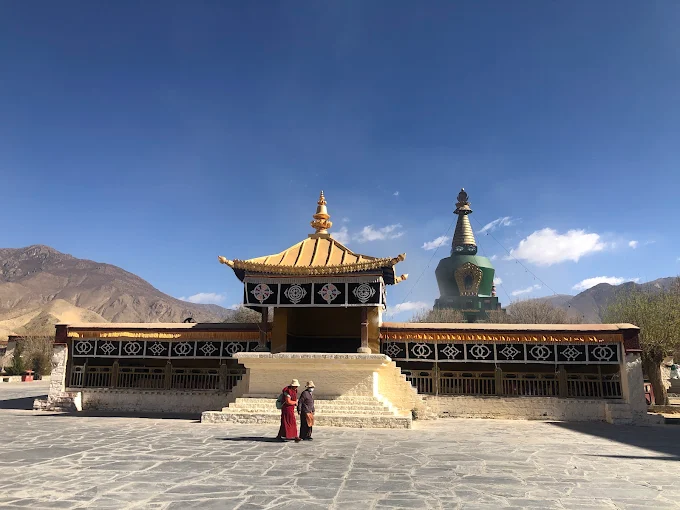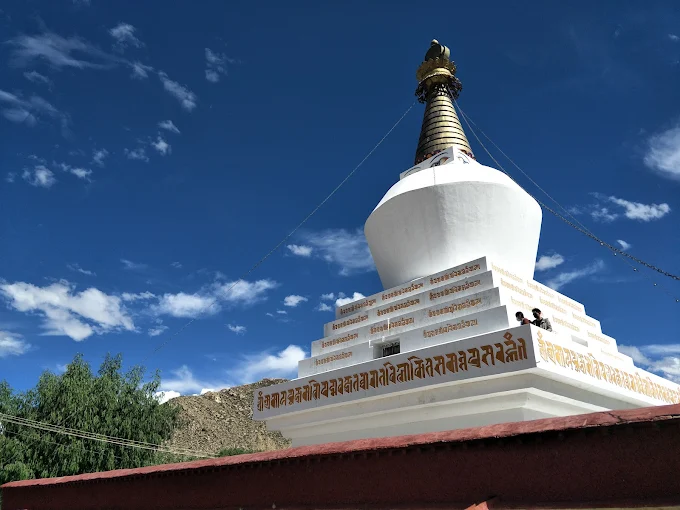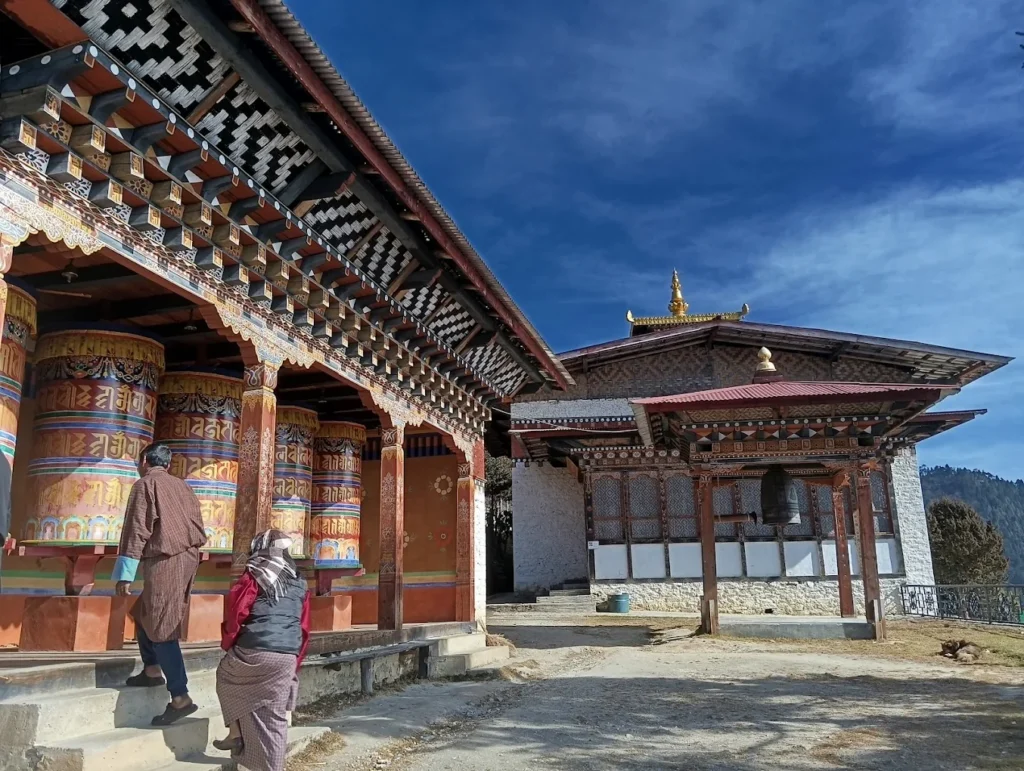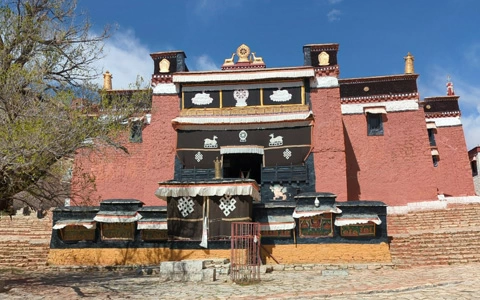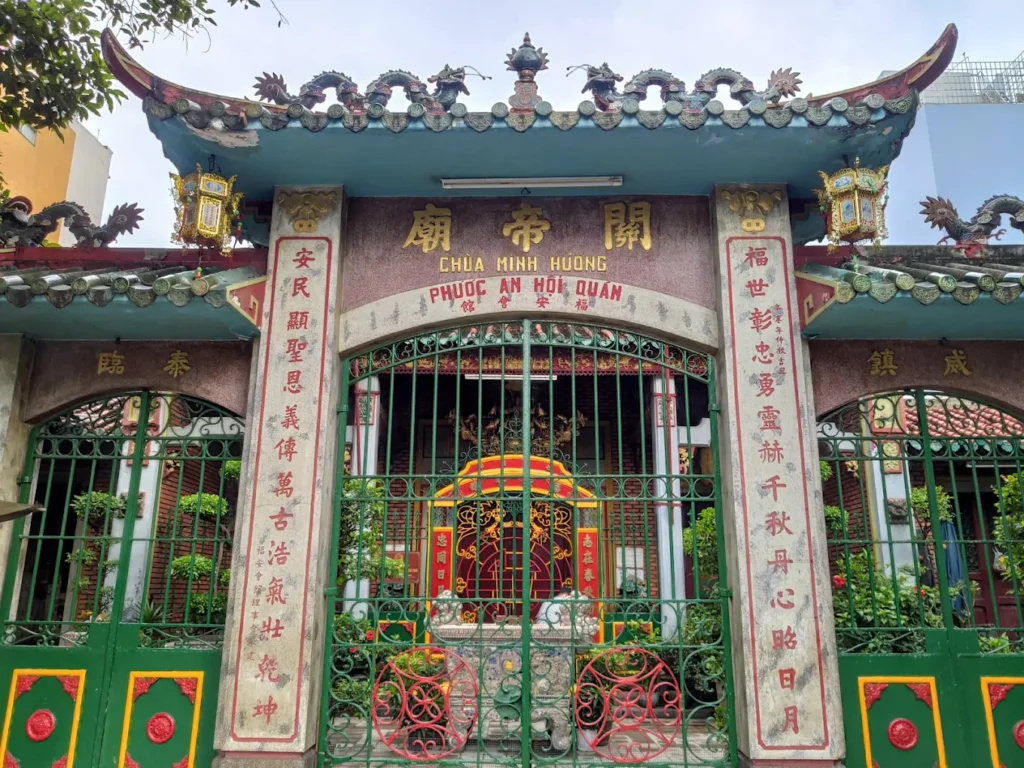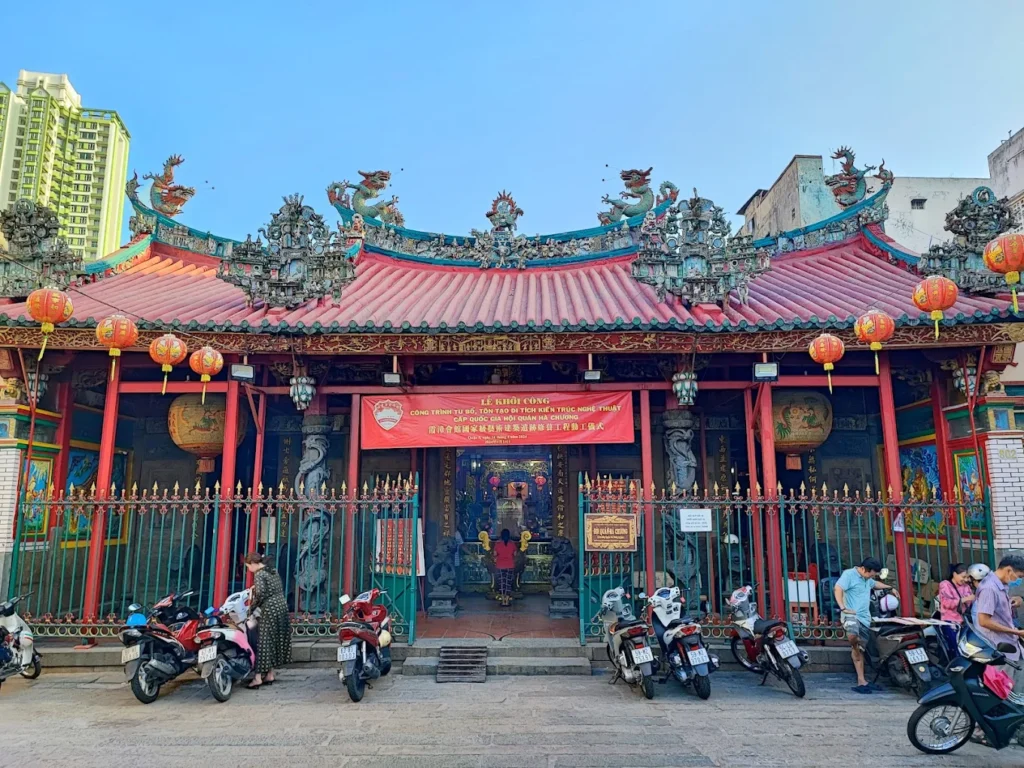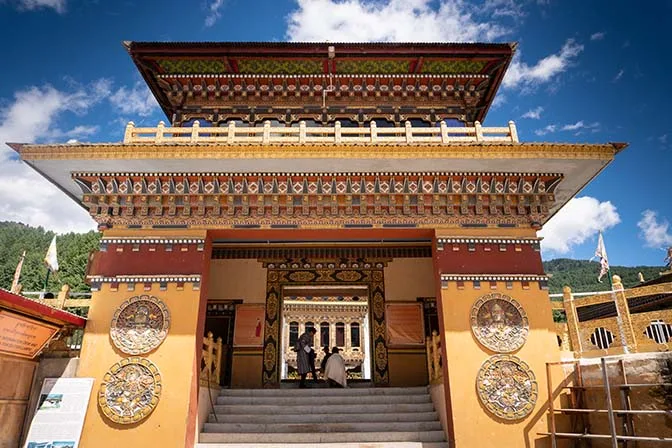Samye Monastery: The Mandala Heart of Tibet’s First Buddhist Sanctuary
Samye Monastery, nestled in the Yarlung Tsangpo River valley near Tsedang, Tibet, stands as a sacred beacon, revered as the first Buddhist monastery in Tibet, founded in the 8th century under King Trisong Detsen. Its mandala-inspired design, symbolizing the Buddhist universe with Mount Meru at its center, radiates spiritual harmony, drawing pilgrims and travelers to its ancient halls. At 3,600 meters, Samye’s red-and-gold structures glow against the backdrop of barren hills and lush fields, offering a glimpse into Tibet’s spiritual dawn. This immersive listing unveils Samye’s essence, guiding you through its storied past, architectural marvels, sacred rituals, and practical visitor insights, inviting you into a cornerstone of Tibetan Buddhism.
The Sacred Dawn of Samye
Essence of Samye Monastery
Samye Monastery pulses with profound spiritual significance, embodying Tibet’s transition from Bön to Buddhism in the 8th century. Founded around 779 by King Trisong Detsen with guidance from Guru Rinpoche (Padmasambhava) and Shantarakshita, it marks the birthplace of Tibetan Buddhism. Its defining feature—a mandala-shaped layout with the Utse temple as Mount Meru—sets it apart as a cosmic blueprint of enlightenment. Tucked in the Yarlung Valley, Samye’s serene ambiance invites contemplation of Tibet’s spiritual roots.
- Spiritual Core: Tibet’s first Buddhist monastery, Nyingma sect hub.
- Iconic Feature: Mandala layout with Utse as Mount Meru.
- Cultural Role: Cradle of Tibetan Buddhism and scholarship.
Historical Evolution
Samye’s story began when King Trisong Detsen, inspired to spread Buddhism, invited Shantarakshita from India, who faced resistance from Bön spirits. Guru Rinpoche subdued these forces, enabling Samye’s construction around 779, completed in 12 years with Nepalese and Chinese artisans. The 792 Samye Debate, pitting Indian against Chinese Buddhist philosophies, solidified India’s influence, shaping Tibetan Buddhism. Despite Cultural Revolution damage, restoration since 1986, funded by state grants, revived its halls, earning UNESCO World Heritage tentative listing in 2006.
- Founding: Built ~779 under Trisong Detsen.
- Samye Debate: 792, established Indian Buddhist dominance.
- Restoration: Revived since 1986, UNESCO tentative listing.
Cultural Impact
Samye’s establishment marked a cultural shift, institutionalizing Buddhism as Tibet’s state religion. Its translation center, led by Shantarakshita, produced the first Tibetan Buddhist texts, preserved in archives like HimalayanArt.org. The monastery’s annual Cham dances and festivals draw pilgrims, maintaining Nyingma traditions. Globally, Samye inspires Buddhist scholars, with works like Matthew Akester’s Jamyang Khyentse Wangpo’s Guide to Central Tibet highlighting its legacy, resonating across Himalayan communities.
- Buddhist Shift: Institutionalized Tibetan Buddhism.
- Translation Legacy: Early Buddhist text translations.
- Global Reach: Inspires scholars, Nyingma practitioners.
Signature Legacy
Samye’s mandala layout, with the Utse temple as Mount Meru surrounded by four chortens and 108 buildings, is its crowning achievement, symbolizing the Buddhist cosmos. The Utse’s golden roof, restored in 1986, houses a sacred Guru Rinpoche statue, believed to radiate blessings. A legend recounts how Guru Rinpoche tamed a naga spirit in the valley, embedding a protective mantra in Samye’s foundation. This cosmic design and mystical aura define Samye’s spiritual identity.
- Mandala Layout: Utse as Mount Meru, cosmic blueprint.
- Guru Rinpoche Statue: Sacred relic in Utse temple.
- Naga Legend: Protective mantra in foundation.
Community and Global Reach
Locals revere Samye as a pilgrimage hub, offering butter lamps during festivals and life events. Its 100 monks, primarily Nyingma, maintain rituals and guide visitors, fostering spiritual continuity. The Tibetan diaspora visits to reconnect, while international tourists, drawn by Tibet Travel and China Highlights, explore its halls. Social media posts on X and academic studies amplify Samye’s influence, connecting it to global Buddhist networks.
- Local Devotion: Butter lamp offerings by Yarlung residents.
- Monastic Community: 100 Nyingma monks guide pilgrims.
- Global Appeal: Attracts diaspora, tourists, scholars.
Architectural Marvels of Samye
Distinctive Design
Samye’s architecture, spanning 25,000 square meters at 3,600 meters, is a groundbreaking mandala, blending Indian, Nepalese, and Chinese influences. The Utse temple, a three-story central hall, represents Mount Meru, encircled by four chortens and 108 buildings symbolizing continents and islands. Its red-and-white walls and golden roof contrast with the Yarlung Valley’s barren hills, reflecting 8th-century Himalayan temple styles. This cosmic layout creates a sacred space unique to Samye.
- Style: Indian-Nepalese-Chinese mandala blend.
- Layout: Utse as Mount Meru, 108 surrounding buildings.
- Setting: Red walls in Yarlung Valley.
Signature Structures
The Utse temple, Samye’s heart, houses a gilded Guru Rinpoche statue and ancient murals of the 12-year construction. Four chortens—green, white, red, and black—stand at cardinal points, representing elemental balance, restored in 1986. The Ling chapels (Jampa, Drolma, Mani, Chenresig), encircling the Utse, contain thangkas and deity statues, while the outer wall’s 1,008 chortens form a protective ring. These structures embody Samye’s cosmic and spiritual grandeur.
- Utse Temple: Guru Rinpoche statue, ancient murals.
- Four Chortens: Elemental balance at cardinal points.
- Ling Chapels: Thangkas, deity statues.
Artisanal Mastery
Samye’s murals, painted by Nepalese artisans in the 8th century, depict Buddhist deities and Trisong Detsen’s court, using mineral pigments for lasting vibrancy. The Utse’s statues, crafted in bronze and clay, showcase early Tibetan sculptural finesse, with Guru Rinpoche’s gaze captivating devotees. Thangkas of Chenresig and Tara, restored post-1986, adorn chapels, while carved wooden beams feature lotus motifs. These works, preserved through careful restoration, highlight Samye’s artistic legacy.
- Murals: 8th-century Nepalese frescoes, vibrant pigments.
- Statues: Bronze, clay figures in Utse, chapels.
- Thangkas: Restored Chenresig, Tara artworks.
Hidden Architectural Gems
Samye conceals subtle treasures within its mandala. The Utse’s rooftop terrace offers panoramic views of the Yarlung Tsangpo River, framed by prayer flags. A faded mural in the Mani Ling chapel depicts the Samye Debate, a historical snapshot. The outer wall’s 1,008 chortens hide small mani stones etched with mantras, inviting quiet reflection. These details enrich Samye’s sacred ambiance, rewarding attentive visitors.
- Rooftop Terrace: Yarlung River views from Utse.
- Debate Mural: Historical artwork in Mani Ling.
- Mani Stones: Mantra-etched chortens in outer wall.
Preservation and Evolution
Preserving Samye’s ancient structures is a delicate task against Tibet’s harsh climate. Restoration since 1986, funded by state grants and UNESCO, used traditional pigments for murals and reinforced mud-brick walls. The Utse’s golden roof was regilded in 1990, blending modern techniques with 8th-century artistry. Global donations support ongoing efforts, ensuring Samye’s cosmic design endures despite erosion and seismic risks.
- Restoration: Pigments, wall reinforcements since 1986.
- Golden Roof: Regilded in 1990.
- Funding: UNESCO, global devotees.
Sacred Rites and Nyingma Traditions
Sacred Daily Rites
Each dawn, Samye awakens with resonant chants, as monks gather in the Utse temple, their voices harmonizing with butter lamp glow. Pilgrims offer khatas (silk scarves) at the Guru Rinpoche statue, their prayers mingling with juniper incense. The hum of prayer wheels along the outer kora creates a meditative rhythm, enveloping visitors in Samye’s spiritual calm.
- Chanting: Morning sutras in Utse temple.
- Offerings: Khatas at Guru Rinpoche statue.
- Ambiance: Incense, prayer wheel hum.
Unique Spiritual Practices
Samye’s monks perform Nyingma rituals, including Guru Rinpoche recitations and vajra empowerments, reflecting the sect’s tantric roots. Pilgrims walk the outer kora, spinning 1,008 prayer wheels to accrue merit, a practice tied to Samye’s mandala design. The Chenresig Ling chapel hosts compassion-focused blessings, unique to Samye’s Nyingma ethos. These rituals, steeped in 8th-century traditions, deepen the monastery’s spiritual allure.
- Guru Rinpoche Rites: Nyingma tantric recitations.
- Kora: 1,008 prayer wheel circumambulation.
- Chenresig Blessings: Compassion-focused rites.
Vibrant Festival Traditions
Samye’s festivals transform the monastery into a vibrant devotional hub. The Cham Dance Festival, held in the seventh lunar month, features masked dances depicting Guru Rinpoche’s triumphs, drawing pilgrims. Saka Dawa, marking Buddha’s enlightenment, includes mass kora walks and lamp offerings, uniting locals. Sharing tsampa (roasted barley) and butter tea fosters community spirit, echoing Samye’s role as Tibet’s spiritual cradle.
- Cham Dance Festival: Masked dances in seventh month.
- Saka Dawa: Kora, lamp offerings.
- Community Role: Tsampa, tea shared.
Visitor Engagement
Visitors can offer khatas or light butter lamps at the Guru Rinpoche statue, guided by monks, immersing in Samye’s spiritual life. Photography is permitted in most areas for a small fee (10–20 yuan), capturing murals’ vivid details, but flash is prohibited. Joining the kora lets travelers walk with pilgrims, feeling Samye’s sacred rhythm. Monks may share tales of the naga spirit, enriching the visit with local lore.
- Offerings: Khatas, lamps with monk guidance.
- Photography: Small fee, no flash in chapels.
- Kora Participation: Walk with pilgrims.
Monastic and Community Roles
Samye’s 100 monks, primarily Nyingma, maintain daily rites, study texts, and guide visitors, upholding its spiritual legacy. They offer blessings for local harvests, weddings, and life events, strengthening Yarlung Valley ties. The monastery trains young monks in thangka painting, preserving Nyingma artistry. This bond ensures Samye remains a living spiritual center, fostering devotion and continuity.
- Monastic Duties: Rites, study, visitor guidance.
- Community Ties: Blessings for local events.
- Art Preservation: Thangka training.
Visiting Samye Monastery
Navigating to Samye Monastery
Samye lies 30 km northeast of Tsedang in Shannan Prefecture, 120 km southeast of Lhasa, along the Yarlung Tsangpo River. From Lhasa, a 120-km drive via the G318 highway takes 2.5 hours by bus or private tour vehicle, followed by a 30-minute ferry or bridge crossing to Samye. From Tsedang, a 30-km drive or taxi ride (30 minutes) reaches the monastery, marked by its golden-roofed Utse temple. The nearby Hepo Ri hill, where Guru Rinpoche tamed spirits, guides the way.
- From Lhasa: 2.5-hour drive, 120 km, ferry/bridge crossing.
- From Tsedang: 30-minute drive, 30 km northeast.
- Local Access: Ferry or bridge to Utse temple.
Address of Samye Monastery
- Location: Dranang County, Shannan Prefecture, Tibet Autonomous Region, China.
- Coordinates: 29.3333° N, 91.5000° E.
- Context: Yarlung Tsangpo Valley, near Tsedang.
Visiting Hours and Etiquette
Samye is open daily from 9:00 AM to 6:00 PM, with early visits offering quieter exploration and cooler temperatures. Dress modestly, covering shoulders and knees, and remove hats in chapels to show respect. Photography is allowed in most areas for a 10–20 yuan fee; bring a flashlight for dim interiors and avoid flash to protect murals. Respect pilgrims by maintaining silence and not touching relics or statues.
- Hours: 9:00 AM–6:00 PM, best in morning.
- Dress Code: Modest clothing, no hats in chapels.
- Etiquette: 10–20 yuan photo fee, no flash, silence.
Accessibility and Safety
Samye’s main areas are accessible via flat, paved paths, but some chapels and the Utse’s upper floors involve steep stairs, challenging for those with mobility issues. Wheelchair users require assistance due to uneven terrain; arrange with tour operators. Samye’s 3,600-meter altitude, lower than Lhasa, still requires acclimatization; hydrate and rest to avoid sickness. The rural setting is safe, but watch for ferry crowds and stray dogs.
- Accessibility: Paved paths, steep chapel stairs.
- Mobility Aids: Limited, arrange assistance.
- Safety: Acclimatize, watch for ferry crowds.
Amenities and Surroundings
Samye offers basic amenities, including restrooms and a small shop selling khatas and prayer beads. A monastery-run guesthouse provides simple meals like momos (dumplings) and butter tea, immersing visitors in local flavors. The surrounding Yarlung Valley, with barley fields and Hepo Ri hill, offers serene reflection spots. Tsedang’s markets, 30 km away, provide souvenirs and dining options.
- Amenities: Restrooms, small shop, guesthouse meals.
- Food: Guesthouse momos, Tsedang markets.
- Surroundings: Yarlung Valley, Hepo Ri hill.
Immersive Visitor Tips
Arrive at dawn to hear monks chanting in the Utse temple, their voices echoing through the hall, setting a meditative tone. Photograph the four chortens from the Utse’s rooftop terrace at midday, capturing their vibrant colors against the valley, paying the photo fee. Walk the kora at dusk, when Hepo Ri glows golden, enhancing Samye’s spiritual ambiance. Savor butter tea at the guesthouse, chatting with monks about the naga legend for cultural depth.
- Dawn Visits: Hear chants in Utse temple.
- Photography: Rooftop chorten shots, 10–20 yuan fee.
- Evening Kora: Hepo Ri views at dusk.
